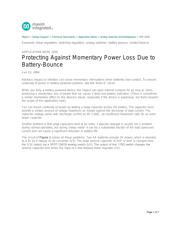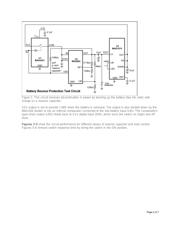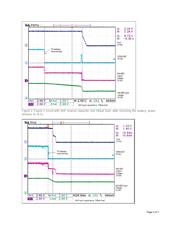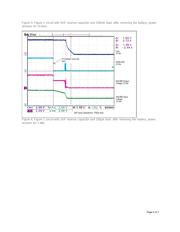下载

Maxim > Design Support > Technical Documents > Application Notes > Analog Switches and Multiplexers > APP 3209
Keywords: linear regulators, switching regulators, analog switches, battery bounce, contact bounce
APPLICATION NOTE 3209
Protecting Against Momentary Power Loss Due to
Battery-Bounce
Jun 21, 2004
Abstract: Impact or vibration can cause momentary interruptions when batteries lose contact. To ensure
continuity of power in battery-powered systems, add this three-IC circuit.
When you drop a battery-powered device, the impact can open internal contacts for as long as 10ms,
producing a momentary loss of power that can cause a false low-battery indication. (There is sometimes
a similar momentary effect on the device's owner, especially if the device is expensive, but that's beyond
the scope of this application note).
You can insure continuity of power by adding a large capacitor across the battery. The capacitor must
provide a certain amount of voltage headroom as margin against the discharge of load current. The
capacitor voltage varies with discharge current as dV = Idt/C, so insufficient headroom calls for an even
larger capacitor.
Another problem is that large capacitors tend to be leaky. Capacitor leakage is usually not a problem
during normal operation, but during "sleep mode" it can be a substantial fraction of the total quiescent
current and can cause a significant reduction in battery life.
The circuit of Figure 1 solves all these problems. Two AA batteries provide 3V power, which is boosted
to 3.3V by a stepup dc-dc converter (U3). The large reserve capacitor of 2mF or 4mF is charged from
the 3.3V output via a SPST CMOS analog switch (U1). The output of this 175Ω switch charges the
reserve capacitor and drives the input of a low-dropout linear regulator (U2).
Page 1 of 7








